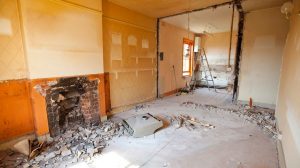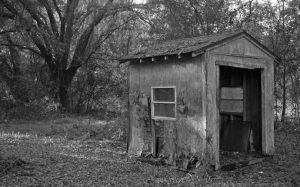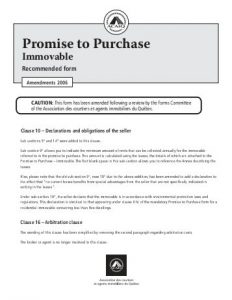I have a second hard disk mounted under /thepool, and I want to make “virtual disks” in there and be able to mount them on any of my virsh-defined virtual machines.
The root filesystem of the VM resides on a different storage pool (uvtool) on a fast SSD, but for bulk storage I don’t want to fill out the SSD with crap.
# Create the storage pool, under "/thepool" where the big disk is mounted
virsh pool-define-as disk-pool dir - - - - "/thepool/libvirt-pool/"
virsh pool-build disk-pool
virsh pool-autostart disk-pool
virsh pool-start disk-pool
# CHeck it's there
virsh pool-list
# Create a volume inside the pool, qcow2 format
virsh vol-create-as disk-pool juju-zfs-pool.qcow2 64G --format qcow2
# Attach it to the VM
virsh attach-disk juju /thepool/libvirt-pool/juju-zfs-pool.qcow2 vdc --persistent --subdriver=qcow2
# Now inside the vm, /dev/vdc exists and can be formatted/partitioned and mounted as normal
These mkv files have h.265 hevc video which my media player can’t read, so I’d like to convert only the video stream to h.264, while leaving all other streams (2 audio tracks in aac, 2 subtitle tracks) intact.
ffmpeg -i some-x265-video.mkv -map 0 -c:v libx264 -c:a copy /tmp/x264-version.mkv
Working remotely for a timezone-distributed company poses an interesting challenge: that of having to figure out dates and times for people in different timezones. This involves not only the relatively trivial “what time is it now in A_FARAWAY_PLACE”, but “what time, in FARAWAY_PLACE_X, will it be in FARAWAY_PLACE_Z” and other fun things.
There are a handful of websites that have handy tools to do these conversions for you; but a problem I’ve found is that the web is going to the crapper, and these sites often have confusing UIs concocted by some javascript-crazed, CSS-infected webmonkey; and often they are completely swamped and rendered unusable by a rising tide of ads and other aggressive content (oh and some won’t let you do anything until you agree to them storing information in cookies in your browser – which they then bafflingly don’t use to store the PREFERENCE you have selected , so like a forgetful vampire, they ask you every single time if you want to accept their silly cookies).
I’ve known how to use the date command to show the date on a different place/timezone, which is already a huge timesaver:
$ TZ="Taiwan/Taipei" date
Fri Apr 12 19:25:31 Taiwan 2019
but – today I was trying to answer “what time in TZ=”America/Chicago” is 1 PM, on Tuesday, in “UK/London“. This is interesting because it’s conversion between two timezones which are not the one I’m in, of a date/time in the future. So I was checking date’s man page for “how to convert a specific point in time”, when I realized date can do this for you! Right in the man page there’s this example:
Show the local time for 9AM next Friday on the west coast of the US
$ date --date='TZ="America/Los_Angeles" 09:00 next Fri'
so then I combined that with the earlier one to come up with:
$ TZ="America/Chicago" date --date='TZ="UK/London" 1:00 PM next Tue'
Tue Apr 16 08:00:00 CDT 2019
This combines:
- TZ argument to calculate dates for a specific timezone, not the current one
--date parameter to “display time described by STRING, not ‘now’”- Descriptive time specifications (1:00 PM next Tuesday – this is a pseudo-human-readable format which is not entirely intuitive – info date has the specifics)
- TZ support inside the descriptive specification
And a list of known timezones can be obtained with timedatectl list-timezones.
If you work on a system that needs to authenticate against an external identity provider (IdP), SAML is almost certainly a fact of life. Working on an actual Identity Provider, sometimes the concern is flipped and you need to ensure Service Providers (SPs) can authenticate against your IdP.
I inherited the somewhat clunky django-saml2-idp along with other developers in my team, and we’ve been maintaining it to add new features. If we were doing this today, we’d probably integrate the very complete OneLogin SAML library instead.
Developing with and for our somewhat homegrown SAML library is made easier by a set of developer tools. For example, OneLogin provides a toolbox to slice and dice SAML assertions; you can verify your assertions, extract attributes, see some examples, play with zipping and encoding, all in one place.
Once you have your IdP mostly working, it’s great to have a test SP to connect to it. For this, I’ve used the RSA SAML test Service Provider. You give some details about your IdP, and it will give you a URL that forwards you to the IdP for authentication, then back to the SP, which verifies authentication worked as expected and even shows you the attribute and auth payload received from the SP.
Once you get things mostly working but need to fine-tune or tweak something (I can never tell between issuer, ACS_URL and audience), the Firefox SAML Tracer extension is absolutely essential. It shows you all requests and responses, which ones contain SAML payloads, and lets you see the actual, decoded and formatted XML payload which makes it a breeze to troubleshoot.
There is an equivalent SAML tracer extension for Chrome but 1) Chrome is crap and 2) the Chrome SAML extension is crap. Use Firefox instead.
In this case I’m hosting the VM on a fast server and trying to access the display on another system (a laptop).
One way to do it is by simply SSHing with X forwarding and running KVM like so:
qemu-system-x86_64 -boot d -cdrom ubuntu-18.04.2-live-server-amd64.iso -m 8192 -enable-kvm
This by default uses a terminal window, but it’s quite slow.
Another option is to start the KVM machine in nographic mode and enable a VNC server:
qemu-system-x86_64 -nographic -vnc :5 -boot d -cdrom ubuntu-14.04.6-desktop-amd64.iso -m 8192 -enable-kvm
then on the desktop system use a vnc client to connect to the magic port:
xtightvncviewer thehost.local:5905
The goal here is to instantiate VMs with a br0 interface grabbing an IP from the LAN DHCP, so in turn the VM can instantiate LXD containers whose IP is also exposed to the LAN. That way everything is visible on the same network segment and this makes some experimentation easier.
Host configuration
Some info taken from this URL.
The metal host is running Ubuntu 18.04, which uses netplan. Here’s the netplan.yaml file:
network:
ethernets:
enp7s0:
addresses: []
dhcp4: no
dhcp6: no
optional: true
bridges:
br0:
dhcp4: true
dhcp6: no
interfaces:
- enp7s0
parameters:
stp: false
forward-delay: 0
version: 2
With this, on boot the system grabs an address from the network’s DHCP service (from my home router) and puts it on the br0 interface (which bridges enp7s0, a Gigabit Ethernet port).
The system also has avahi-daemon installed so I can ssh the-server.local easily.
VM configuration
Next, the VM which I created using uvt-kvm:
# Get a Xenial cloud image
uvt-simplestreams-libvirt --verbose sync release=xenial arch=amd64
# Create/launch a VM
PARAMS='--memory 8192 --disk 32 --cpu 4'
uvt-kvm create the-vm $PARAMS --bridge br0 --packages avahi-daemon,bridge-utils,haveged --run-script-once setup_network.sh
The setup_network.sh script takes care of setting up the network 🙂 This can more cleanly be done with cloud-init but I’m lazy and wanted something fast.
The script deletes the cloudconfig-created .cfg file, tells cloud-init to NOT reconfigure the network, and drops the config file I actually need in place.
#!/bin/bash
echo "Acquire::http::Proxy \"http://192.168.1.187:3128\"; " >/etc/apt/apt.conf.d/80proxy
# Drop the cloudinit-configured interface
ifdown ens3
# Reconfigure the network...
cat <<EOF >/etc/network/interfaces.d/1-bridge.cfg
auto lo br0
iface lo inet loopback
iface ens3 inet manual
iface br0 inet dhcp
bridge_ports ens3
bridge_stp off # disable Spanning Tree Protocol
bridge_waitport 0 # no delay before a port becomes available
bridge_fd 0 # no forwarding delay
EOF
echo "network: {config: disabled}" > /etc/cloud/cloud.cfg.d/99-disable-network-config.cfg
rm /etc/network/interfaces.d/50-cloud-init.cfg
# Then bring up the new nice bridge
ifup br0
apt-get remove -y snapd && apt-get -y autoremove
The network config in /etc/network/interfaces.d/1-bridge.cfg should look like:
auto lo br0
iface lo inet loopback
iface ens3 inet manual
iface br0 inet dhcp
bridge_ports ens3
bridge_stp off # disable Spanning Tree Protocol
bridge_waitport 0 # no delay before a port becomes available
bridge_fd 0 # no forwarding delay
LXD configuration
Finally, install lxd. When asked to configure the lxd bridge, respond
“no”, and on the next question you’ll be asked whether to
supply an existing bridge. Respond “yes” and specify
“br0”.
Now, when an lxd container is instantiated, it’ll by default appear on
the same network (the home network!) as the VM and the main host, getting its
DHCP from the home router.
When things break
Suddenly the bridge interface stopped working. I checked this to help diagnose
it. But that wasn’t it. Turns out, I’d installed Docker on the
main host and Docker messes with the firewall
configuration by setting
iptables -P FORWARD DROP. I just set it back to ACCEPT to get it working.

Now that you own the home, comes the time for those renovations from your loan. This means that we couldn’t move right away, since it was much easier for the contractor to work on an empty house.
This all went well, since we still had some time left in our apartment’s lease, so we were able to wait for most of the reno work to be done. But it makes sense for you to check frequently on the work, particularly since the contractor is bound to have some questions and clarifications, choices need to be made, some materials need buying, and so on.
The not-so-nice part was that, as discussed in the earlier post, we had to pay the contractor out-of-pocket, because the portion of the mortgage loan covering the renovations isn’t released (the notary holds that money) until the renovation is entirely finished. But we had planned for this so we were able to pay the contractor while not breaking the bank or going into massive credit card debt.
My advice here is to tell the contractor about the loan conditions and ask him to finish the work as soon as possible. Once the work is complete, call your mortgage broker who will arrange an inspection with the lender. The lender will hire an appraiser who will come to your home and do the inspection, and they will absolutely insist on everything being entirely finished; no missing paint job, no doorframes without doors, no excuses.
On the bright side, the process is relatively quick, it was less than a week between calling our mortgage broker and receiving the notary’s call to pick up the cheque for the remaining money.
Then we were able to move in, but that, and the ongoing maintenance work needed by a somewhat aged house (but with lots of character and charm) are beyond the scope of this series.
Our timetable looked like this in the end:
Initial visit to the mortgage broker – February 10th
Initial contact with real estate agent – February 15th
Started house visits – February 20th
Made an offer on the house we liked – March 2nd
Offer accepted – March 6th
Closing day – April 26th
Possession date – May 10th
In the end, from the initial visit to the broker to get the loan preapproval to taking possession of the property, even including the weird 2-week period after the closing date, the entire process took exactly 3 months.

Once the conditions have been fulfiled and the notary has all the documents, all that’s left to do is wait for “closing day”.
Before closing day, you’ll probably have an appointment with the notary to review all the documents and sign most of them. This includes the deed of sale, the mortgage agreement, and some other agreements.
Also before closing day, the notary is likely to request you give him the cheque for the downpayment. This has to be a certified cheque or money draft, so be sure to ask the notary and get the cheque well in advance.
My notary told me he likes to do things this way since it means a shorter appointment on the actual closing day, but some notaries may choose to do everything on closing day, which will mean about an hour at their office.
Finally, on closing day, the sellers and buyers meet at the notary’s office, the essentials of the purchase agreement and deed of sale are read and confirmed by all parties, money exchanged (the notary gives the sellers a cheque for the full amount of the purchase, this is made up of your downpayment plus the money the mortgage lender deposited in the notary’s account). Then signatures made (at this point we signed the deed of sale, meaning we own the house), and that’s pretty much it. You walk out of the ceremony being the owner, on paper, of the property you chose.
It may be that you’ll get the keys to the house during the closing; in our case, we had to wait an extra 2 weeks for the sellers to vacate the house (we all agreed to this in the promise to purchase), after which we met them at the house and received the keys.
Congratulations, you’re now a homeowner!
Our offer to purchase contained two main conditions: an inspection within 7 days of the acceptance, and obtaining an approved mortgage loan within 15 days of the acceptance.
Since we’re going for a renovation and extending the mortgage to cover that cost, it’s usual to add another condition to allow for a contractor to visit the space to provide the required work quote. In our case, we rolled the contractor visit the same day we did the inspection, so there was no extra visit required. The inspection had to be performed within 7 days of the offer’s acceptance, and we did it on day 5. We got the quote for the renovations on day 8. We sent all the documents for the mortgage beginning on day 1, completing them on day 8 with the renovation quote.
The lender sent us two “letters of commitment” to sign. The first one about 4 days after we had the accepted offer, then a second one about 3 days after sending the renovation quote (so 11 days into the process). We signed and returned them as soon as we received them, and then the lender sent the final approval letter 2 days before our 15-day deadline for completing financing was up, which was a bit nerve-racking. So my advice would be:
1- Do the inspection as soon as possible. If possible, within 3 days of the offer acceptance.
2- Fulfil all of the lender’s requirements as soon as possible. Don’t drag your feet; get a notary well in advance.
3- Ask for a slightly longer time to get financing. We asked for 15 days because of the extra renovation quote time required.
Our agent and mortgage broker were very helpful during all this process and mostly we only had to sign documents and collect some information. Most of this had already been pre-screened by the mortgage broker so in reality, things went pretty smoothly.
Once you get the letter from the lender or mortgage broker, send it to your agent (our broker actually sent the letter to the agent for us – mortgage brokers are really helpful), this should fulfill all the conditions of the offer.
Most of the next steps will be done by the real estate agents, the lender/bank and the notary. At this point I did call everyone to ask what I had to do next, and the main response was “nothing” and “wait for the notary to call you”.

After visiting 4 houses we decided on making an offer on the fourth one: it’s well-located, has a large front yard (and no backyard!), and two levels, the second of which has a very weird layout.
Apparently the no-backyard thing is a deal breaker for most people, but it wasn’t for us because the front yard is a pretty good size. The second odd thing is the layout; this may have put a lot of people off, but our realtor suggested it could easily be remodelled into something more traditional and fitting to our needs.
So after coming home and sleeping on it, we decided we could renovate the space before moving in, and that would make the house good for our needs. So then you call your agent and tell them you want to make an offer to purchase the house.
The offer is called “promise to purchase” in Québec, and it’s a very standard format, but it made a lot of sense for the agent to help us with that. She asked for a beginning price we’d be willing to offer, and offered advice on whether to modify this (she actually suggested we go lower than our initial idea, so we went with her advice). She’ll also help decide which conditions to add to the offer. In our case, it was conditional to getting the financing, and on having an inspection performed on the property.
The seller can either reject your offer, accept it as-is, or send you a counter-offer. In our case we got a counter-offer, with a higher price (but still below what I’d wanted to offer in the first place – this validated our agent’s criteria about the initial offer). Since this was well within what we were expecting, we accepted the counteroffer. This starts the clock ticking to fulfil the conditions, the main ones being financing and the inspection. Talk to your agent and ensure you allow enough time for all this to happen.


